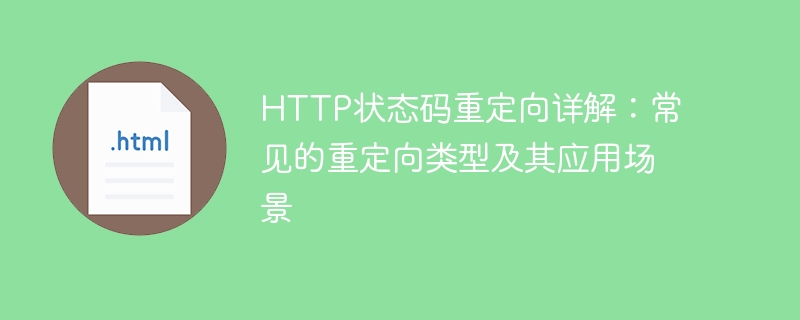
HTTP status codes are a standardized way to represent the results of HTTP requests and responses. In the HTTP protocol, redirection is a common request processing method. Through redirection, the server can point the requested URL to a new location, thereby relocating the resource. This article will introduce in detail common redirect types and their application scenarios.
- 301 Moved Permanently (Permanent Redirect)
When the server receives the request, it returns a 301 status code indicating that the requested resource has been permanently moved to a new location. This means that the search engine will replace the original URL with the new URL and use the new URL as an index. This status code is generally used for situations where permanent redirection is required such as renaming of the URL and adjustment of the URL structure.
- 302 Found (Temporary Redirect)
302 status code indicates that the requested resource has been temporarily moved to a new location. Unlike the 301 status code, the 302 status code indicates that the redirect is temporary and search engines will retain the original URL when processing this status code. This status code is often used in scenarios such as load balancing, temporary shutdown or website maintenance.
- 303 See Other (View other location)
303 status code is used to redirect the result of the POST request, indicating that the request has been completed, but the client needs to jump to another URL to obtain the result. It is often used with the GET method to prevent clients from submitting POST requests multiple times. This status code is often used for redirection after submitting a form.
- 307 Temporary Redirect
The 307 status code is similar to the 302 status code, indicating that the requested resource has been temporarily moved to a new location. The main difference from the 302 status code is that the 307 status code requires the client to maintain the original request method and request body. This status code is often used in redirect scenarios where the original request method needs to be preserved.
- 308 Permanent Redirect
The 308 status code is similar to the 301 status code, indicating that the requested resource has been permanently moved to a new location. Different from the 301 status code, the 308 status code requires the client to maintain the original request method and request body. This status code is often used in permanent redirect scenarios where the original request method needs to be preserved.
According to different application scenarios, we can choose the appropriate redirection type. Permanent redirection is mainly used when the URL changes or the resource is moved to a new domain name. Temporary redirection is generally used for temporary website maintenance, load balancing and other scenarios. 303 and 307 status codes are generally used for redirection of POST requests to maintain the integrity of the original request.
In actual development, reasonable use of redirection can help us better manage the URL structure of the website and improve the user experience. At the same time, search engines also have certain processing rules for website redirection behavior. Reasonable redirection can improve the SEO effect of the website.
To summarize, redirection is a common request processing method in the HTTP protocol. Different redirection status codes correspond to different application scenarios. Reasonable use of redirects can improve the user experience and SEO effect of the website. At the same time, you also need to pay attention to the processing rules of search engines. I hope this article will give readers some understanding and application guidance on HTTP status code redirection.
The above is the detailed content of Common HTTP redirect status codes and their application scenarios. For more information, please follow other related articles on the PHP Chinese website!






